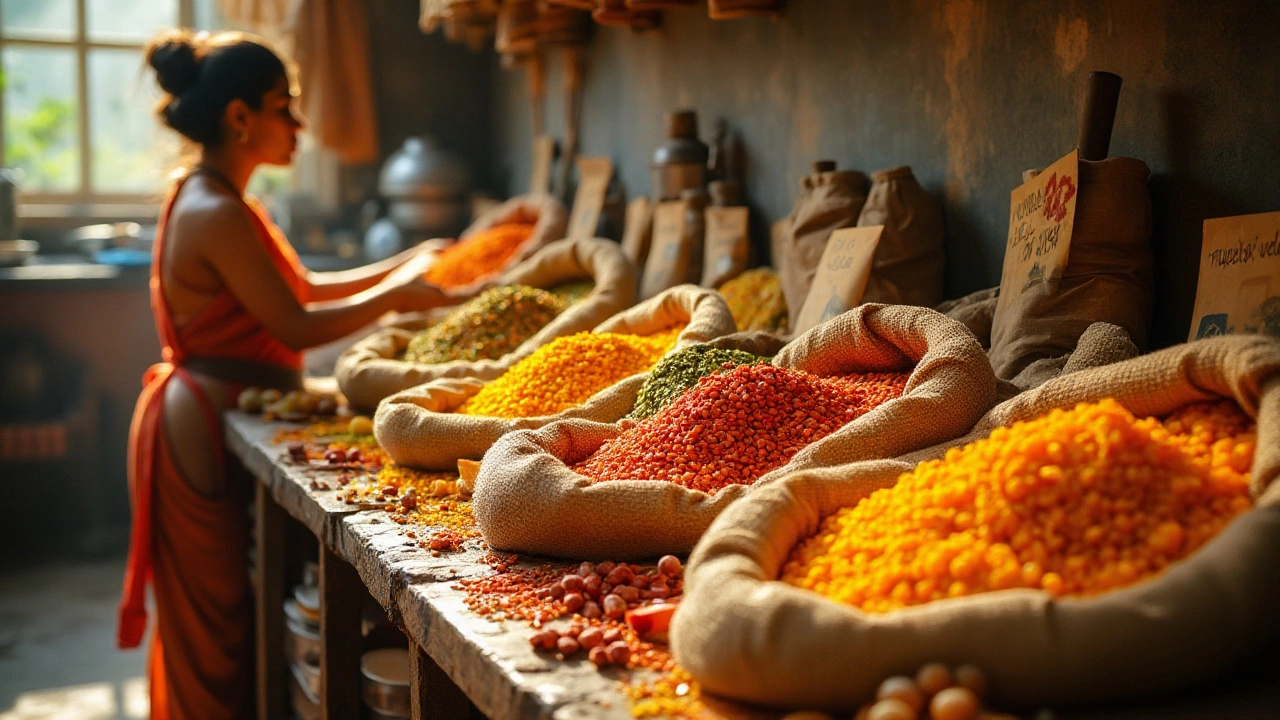Dal – Easy Lentil Recipes, Health Benefits & Cooking Tips
If you’ve ever wondered why dal shows up on almost every Indian menu, you’re not alone. It’s cheap, tasty, and packs a protein punch that makes it a go‑to for vegetarians and meat‑eaters alike. Below you’ll find straight‑forward ways to cook dal, plus some handy tricks to keep it from turning mushy or bland.
Why Dal Is a Kitchen Staple
First off, dal isn’t just one thing – it’s a family of lentils, peas, and beans that cook quickly and absorb flavor like a sponge. From red masoor to green moong, each variety brings its own texture and taste. The real win is the nutrition: dal delivers fiber, iron, and plant‑based protein without the heavy fats you find in many meat dishes. That’s why families across India rely on it for everyday meals and why it’s gaining fans worldwide.
Quick Tips for Perfect Dal Every Time
1. Rinse well. A quick rinse removes dust and excess starch that can make dal gummy.
2. Use the right water ratio. Most dal needs about 3 cups of water for every cup of lentils. Adjust if you like it thicker (2 ½ cups) or soupier (4 cups).
3. Add aromatics early. A pinch of turmeric, a couple of cloves, and a bay leaf give depth without extra effort.
4. Don’t over‑cook. Check the texture after 15‑20 minutes (for split red lentils) or 30‑40 minutes (for whole moong). It should be soft but still hold shape.
5. Finish with a tempering. Heat oil, toss mustard seeds, cumin, dried red chilies, and a few curry leaves. Pour it over the cooked dal for that classic crackle and fresh flavor.
Now that you have the basics, let’s walk through a simple recipe you can adapt any day. Grab a cup of split red lentils, rinse them, and toss them into a pot with 3 cups of water, a half‑teaspoon of turmeric, and a pinch of salt. Bring it to a boil, then lower the heat and simmer, stirring occasionally to prevent sticking. When the lentils split and the broth thickens, it’s time for the tempering.
Heat two tablespoons of oil in a small pan. Add a teaspoon of mustard seeds; once they pop, drop in half a teaspoon of cumin seeds, a chopped green chili, and a few curry leaves. Let them sizzle for 10 seconds, then pour the hot mixture over your dal. Give it a quick stir, taste, and add a splash of lemon juice if you like a bright finish.
If you’re curious about variations, try swapping the red lentils for yellow toor dal or green moong. Each change brings a new texture—yellow dal stays creamy, while moong stays slightly grainy. You can also toss in chopped tomatoes, spinach, or even a handful of grated coconut for regional twists.
One last tip: store leftovers in the fridge for up to three days. Dal often tastes better the next day because the flavors keep developing. Reheat gently on the stove, add a splash of water if it’s too thick, and you’ve got a ready‑to‑eat meal in minutes.
So next time you’re planning a quick dinner, reach for a bag of dal. With the right water ratio, a few easy aromatics, and a simple tempering, you’ll have a nutritious, comforting bowl ready in less than half an hour. Happy cooking!
Dal vs Lentils: What Sets Them Apart (And Why Your Dishes Taste Different)
Ever wondered if dal and lentils are the same thing? This article unpacks the real difference, showing what each term means in kitchens—especially Indian ones. You'll learn why knowing the difference matters for your next dal recipe and how it can make your meals turn out just right. Plus, there are some smart shopping and cooking tips to save you confusion in the store and in the kitchen. Spoiler: They’re not always interchangeable.
Dal Varieties You Might Want to Skip in Your Recipes
Dal is a staple in many cuisines, offering a nutritious and hearty option for meals. However, not all dal varieties are created equal, and some might be best avoided in your everyday cooking due to their potential health impacts or cooking complexities. This article delves into the different types of dal that might not be suitable for regular consumption and provides tips on how to select the right dal for your recipes. Discover how factors such as cooking time, taste, and dietary considerations can influence your choice.

